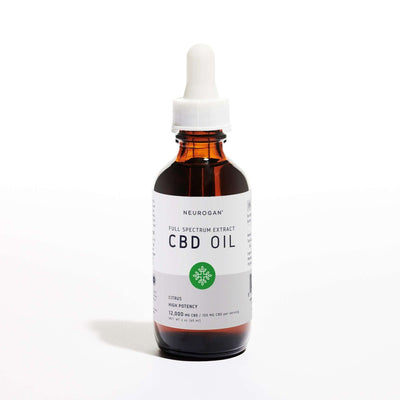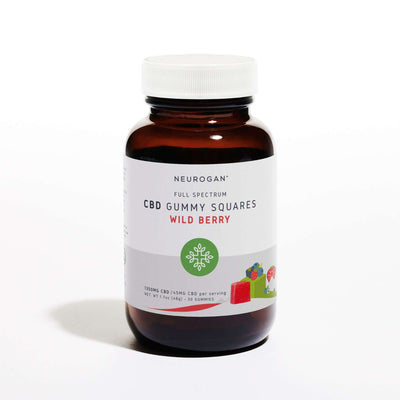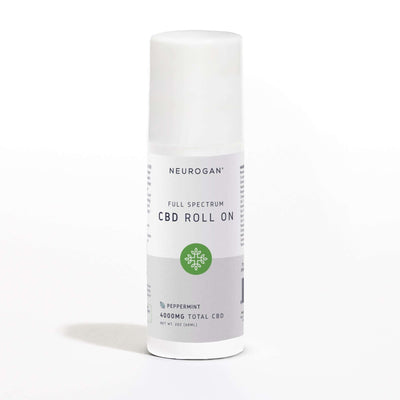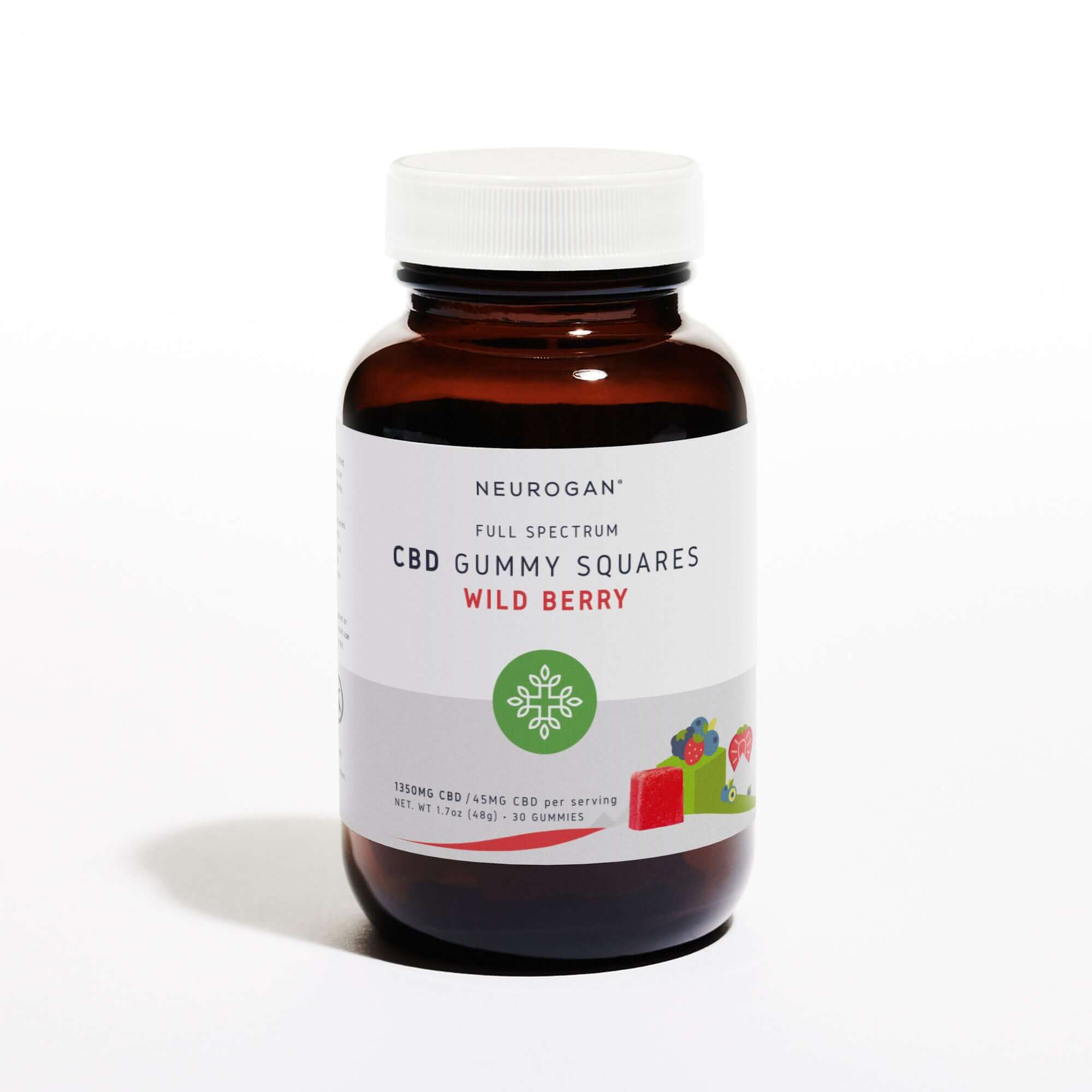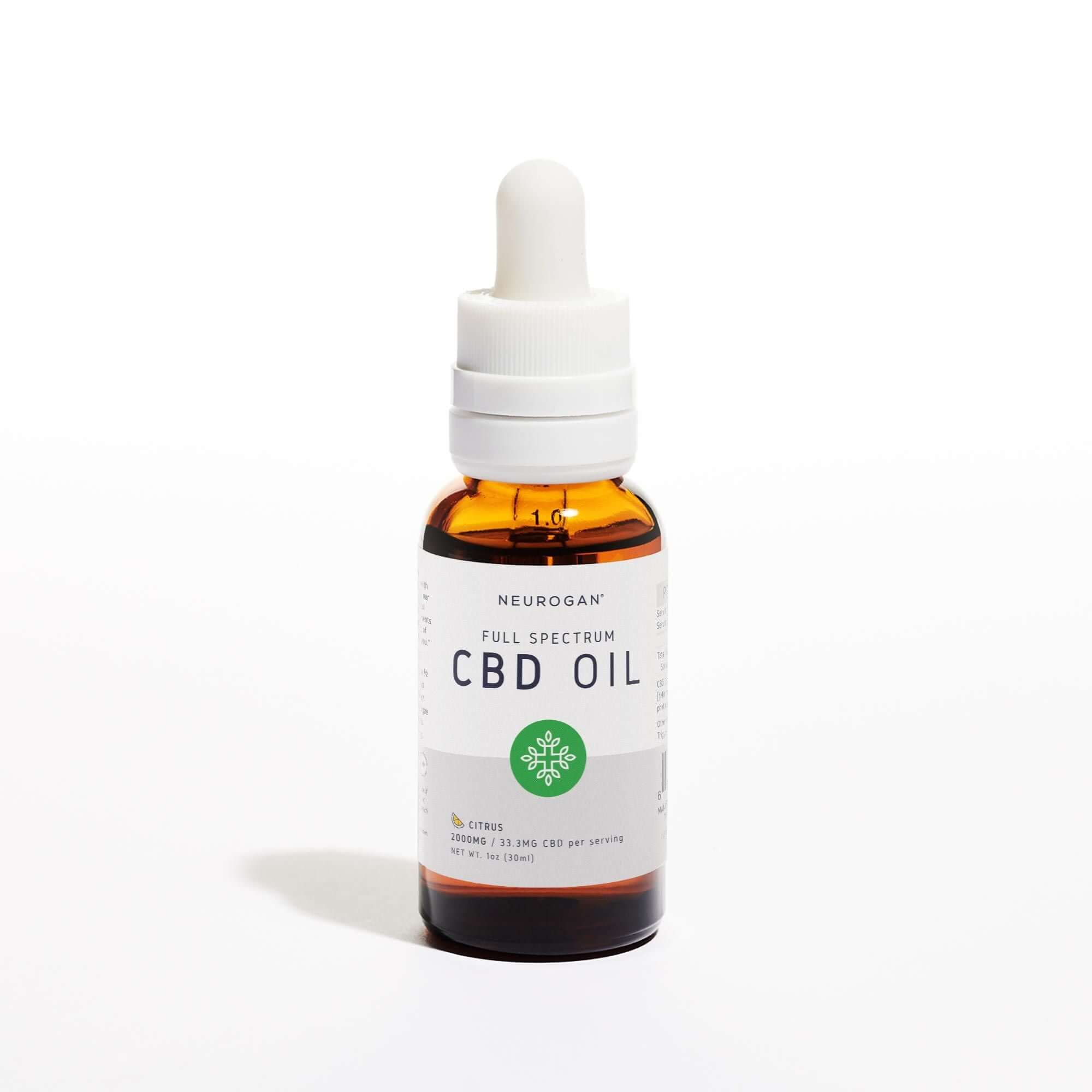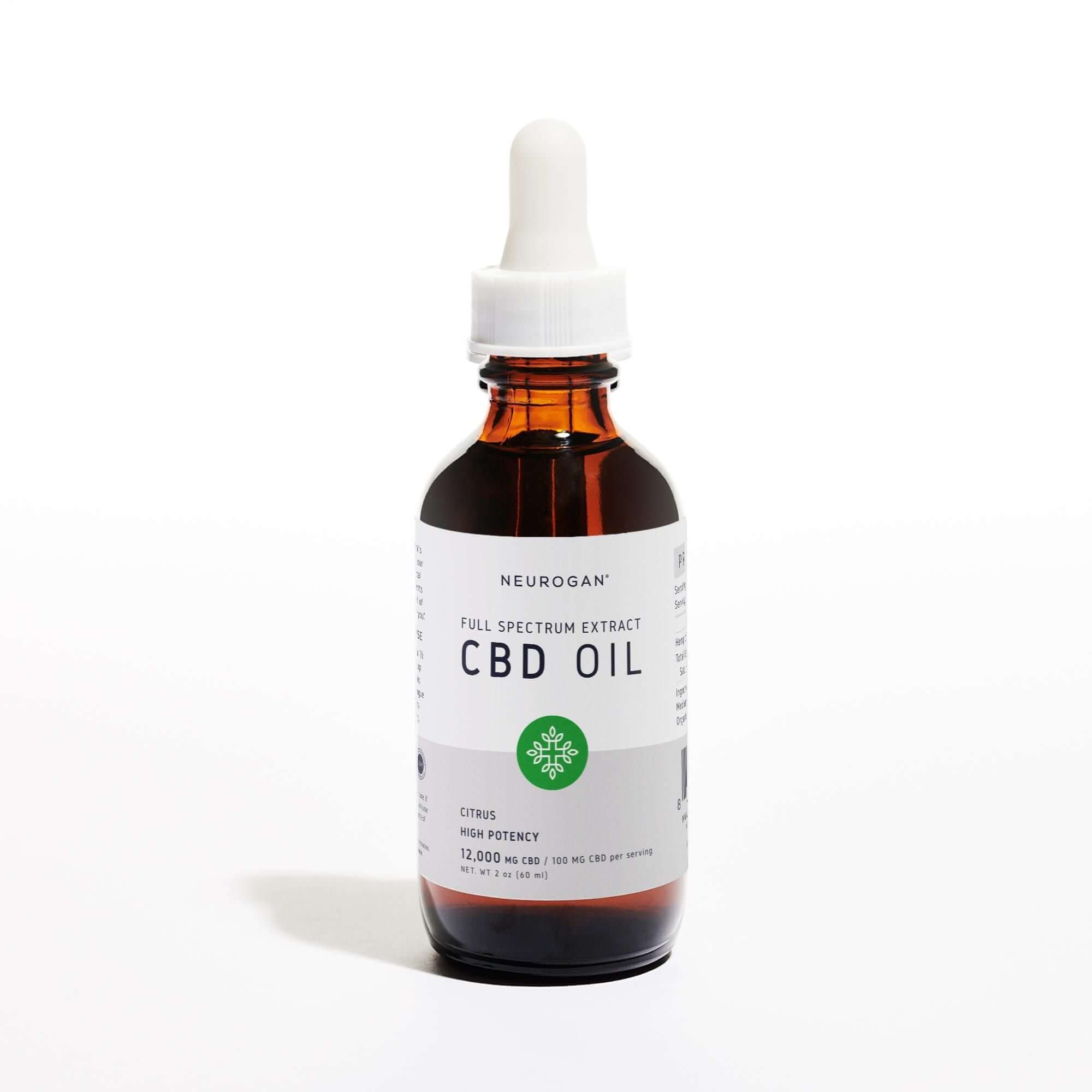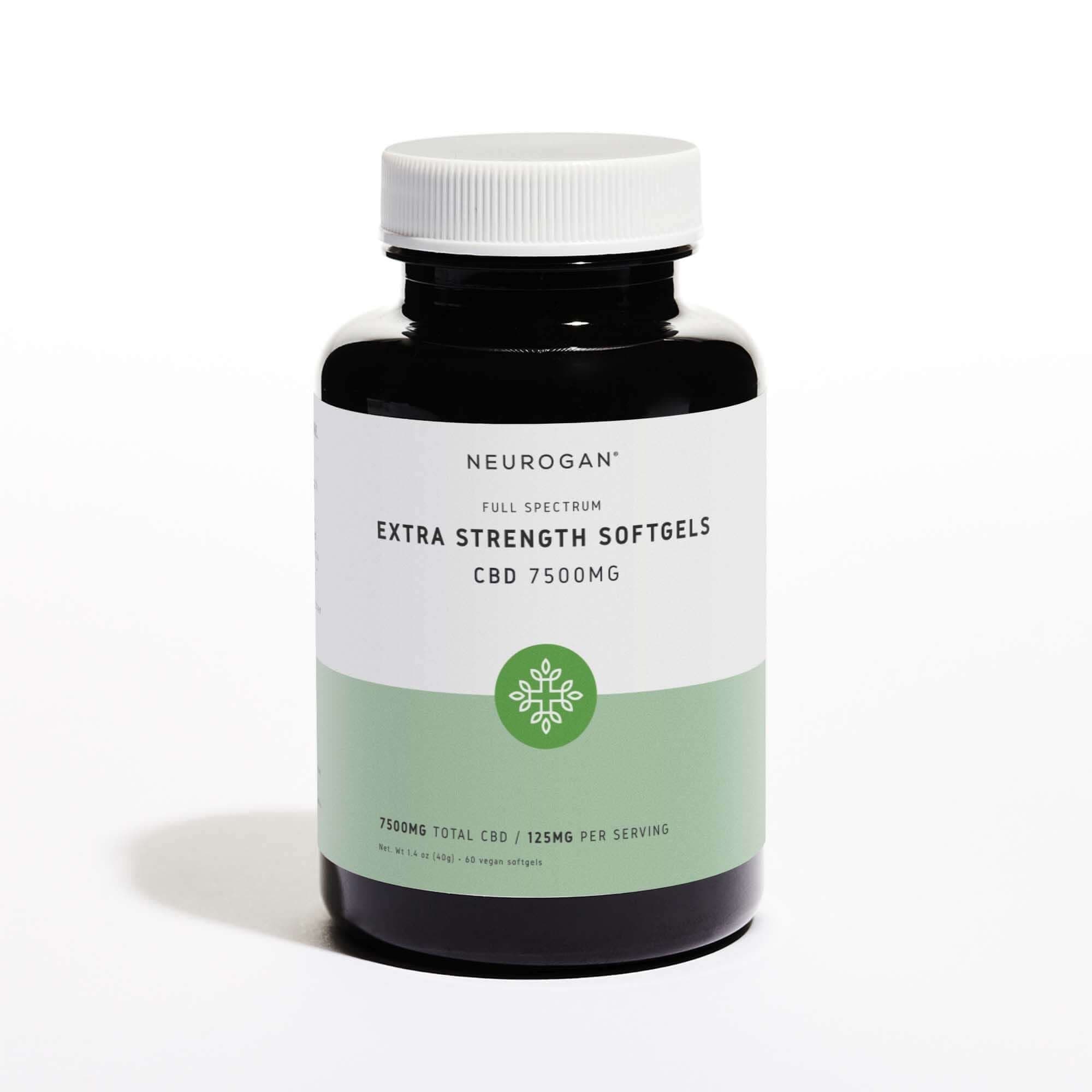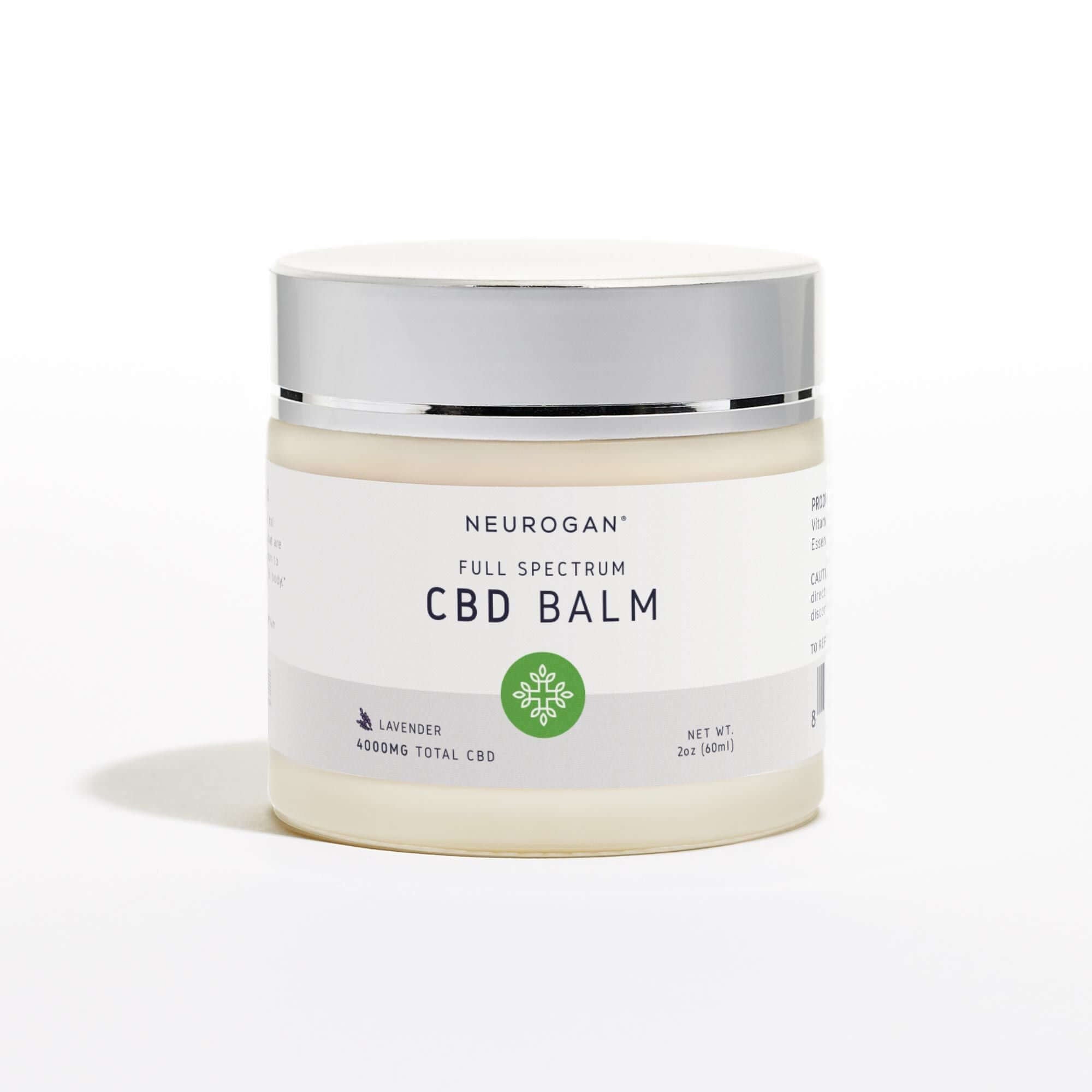Imagine starting your day without having chronic pain dictate your life—waking up with a sense of freedom, unburdened by the constant throbbing, aching, or sharp discomfort that's become all too familiar.
For many, CBD oil has become an alternative to conventional forms of pain relief that's been helping them achieve that reality.
Instead of cautiously planning each step or anticipating potential flare-ups, people are finding renewed energy and optimism with the help of a compound derived from the cannabis plant, cannabidiol (CBD).
In this article, we'll investigate the potential benefits of CBD for pain, uncover the science behind its effectiveness, and shed light on its growing popularity as an option for those in need.
The Key Takeaways:
- A lot of research and many personal accounts suggest CBD holds potential as a natural option for managing pain.
- Full spectrum CBD, which contains a range of beneficial compounds, may offer enhanced pain-relieving effects compared to isolate CBD.
- The dosage of CBD for pain relief can vary, experts recommend starting with a low dose and gradually increase if needed.
- CBD oil is a versatile and commonly used form of CBD for relief from knee pain, headaches, and chronic pain, allowing for precise dosing and sublingual administration.
- Topical CBD products may provide localized pain-relieving benefits without systemic effects, which may be suitable for those with arthritis pain and muscle soreness.
- Consider individual factors, such as body chemistry and pain severity, when determining CBD's best form and dosage to relieve pain, and consult with a healthcare professional for personalized advice and recommendations if you're on medications.
Does CBD Work for Pain?
There's a lot of buzz surrounding CBD oil for pain management as a natural and effective alternative to traditional medications — much of this comes from personal accounts of people using CBD oil for arthritis, muscle, and even cancer pain.
The truth of the matter is that everyone's experience with CBD may vary — factors like the severity of pain, CBD dosage, the quality of CBD products, and the method of administration can all influence the potential effectiveness of CBD for pain.
However, growing evidence suggests that CBD holds promise as a tool for pain relief.
How Does CBD Work?
There are several studies that have explored the effect of CBD and other cannabinoids on different types of pain, including neuropathic pain, inflammatory pain, and chronic pain associated with arthritis and multiple sclerosis [1, 2].
While research is still underway, here's what researchers found out about how CBD works in the body:
- CBD works on the endocannabinoid system (ECS), which plays a key role in modulating various physiological functions, including pain perception. CBD may modulate pain signals by interacting with the ECS, potentially reducing pain sensations and inflammation [3].
- CBD may interact with serotonin receptors, specifically the 5-HT1A receptor, which regulates mood and pain perception. It's hypothesized that this interaction may directly influence one's pain sensitivity and contribute to its reported analgesic (pain-relieving) effects [4].
- CBD may activate vanilloid 1 (TRPV1) receptors, which are known for their role in reducing the sensation of pain and moderating inflammation [5].
- CBD may have anti-inflammatory properties through interactions with various immune cells and inflammatory mediators. Often inflammation is at the root of chronic pain, and it's believed that addressing inflammation can help to reduce pain [6].
Pain is extremely complex and varies from person to person, making it a fascinating puzzle for researchers.
Understanding CBD's full potential pain-relieving properties will require more research. As it stands, it's like trying to solve a mystery where each person's unique experience with pain holds a clue, and we're eagerly piecing together CBD's mechanisms of actions and how they fit into this puzzle.
CBD for Knee Pain/Joint Pain

The knee joint is particularly prone to pain due to its complex structure and its load-bearing movement throughout our lives. Integrating CBD gummies for joint pain into a management routine may potentially offer some relief.
It's also susceptible to various injuries, such as ligament tears, meniscus tears, or patellar dislocation, which can result in acute pain and long-term discomfort. These types of knee injuries will oftentimes require medical attention and rehabilitation, but some may find that using CBD for their knee pain can help substantially.
With old age, wear and tear of the knee joint is common, resulting in conditions such as osteoarthritis, where the protective cartilage within the joint starts to deteriorate, causing pain and inflammation. It is believed, that elders who include CBD gummies for seniors in their daily routines have found potential relief for arthritis-related needs.
Other common joints that are prone to injury or wear-and-tear discomfort include the shoulders, hips, elbows, wrists, ankles, hands and fingers and feet. For many people suffering from joint pain, CBD has been a godsend in supporting healthy mobility and comfort.
CBD For Arthritis
Arthritis is a broad term that refers to inflammation of one or more joints, resulting in pain, stiffness, swelling, and limited range of motion. There are many different types of arthritis but the most common are osteoarthritis (wear and tear) and rheumatoid arthritis (autoimmune).
As it turns out, CBD Gummies for arthritis may specifically help some people regain joint function and reduce pain—but it's not a miracle compound. It's best used alongside other comprehensive approaches to arthritis management.
Incorporating a holistic treatment plan that includes regular exercise, physical therapy, a healthy diet, and medication prescribed by a healthcare professional can provide the most effective and well-rounded approach to managing arthritis symptoms.
Does CBD for Pain Have Side Effects?
CBD for pain could have some side effects, though it has a favorable safety profile compared to conventional treatments for chronic pain.
Some of the reported adverse effects associated with using CBD products include:
- Dry mouth
- Changes in appetite
- Fatigue
- Drowsiness
- Diarrhea
- Interactions with medications
Thankfully the side effects of taking CBD products are typically mild and short-lived, as most individuals tolerate CBD well, even at high doses.
But that being said, the likelihoodchances and severity of side effects can vary among individuals and may depend on factors like dosage, mode of administration, individual sensitivity, and the quality of CBD products used.
What is the Best Method of CBD for Pain?
There's no best method for using CBD to manage pain, as it largely depends on the individual's preferences and the nature of the targeted pain.
Let's go over the most common methods of CBD administration for pain relief. At Neurogan, we offer a ton of variety of products for general relief & calmness.
1. Sublingual (CBD Oil Drops/ Tinctures/Spray)

CBD oil available in convenient options like CBD sublingual spray and tincture bottles, is one of the most accessible CBD products that comes in a variety of potencies and flavors. It's comprised of a CBD extract and a carrier oil such as hemp seed oil, coconut oil, or olive oil.
Sublingual administration allows for the cannabinoids to enter the bloodstream quickly through the network of microcapillaries under the tongue for a relatively fast onset of effects. This method involves placing drops of CBD oil under the tongue and holding it there for 15-20 seconds before swallowing.
2. CBD Capsules Or Edibles

CBD can be consumed orally in the form of capsules, softgels, or infused edibles like CBD gummies.
Oral ingestion results in a slower onset of effects as the active compounds are absorbed through the digestive system. This method also requires higher potencies to account for the stomach acids and the first-pass metabolism (liver) breaking down some CBD before it enters the bloodstream.
Despite the slower onset of effects, ingesting CBD capsules might be best for those looking to take higher concentrations of CBD and who want the longest-lasting effects compared to the other methods.
To increase absorption of ingested CBD products for pain, we recommend taking your CBD pills or gummies with a light meal to aid in digestive absorption and mitigate potential stomach upset. Knowing more of how to take CBD gummies for pain may help you get the relief you need.
A flavorful way to incorporate CBD into your routine is CBD gummies. Take note that knowing where to buy CBD gummies for pain from a reliable source can be crucial to get the best benefits out of CBD.
Additionally, for individuals managing conditions like fibromyalgia, incorporating the best edibles for fibromyalgia may provide a beneficial approach. These specialized edibles can offer additional relief from widespread pain and discomfort, complementing the pain management properties of CBD edibles.
3. Inhalation (Smoking/ Vaping CBD)

CBD can be smoked in pre-rolled hemp joints or vaped with vaping devices for the fastest delivery of cannabinoids into your system, making it a favorite among those with acute pain episodes.
In this method, cannabinoids enter the bloodstream through the oxygen exchange pathways in the lungs. While this is a strong and potent delivery method, it might not be suitable for individuals with respiratory concerns.
4. Topical CBD (CBD Cream, Lotion, Massage Oil, and Salves)

Topical CBD products are designed to be applied directly to the skin at the site of pain and may provide relief for sore muscles, stiff joints, or specific areas of inflammation by interacting with endocannabinoid receptors in the skin for inflammatory support.
Topical CBD is best for localized, topical pain relief and may provide targeted pain relief without systemic effects. Most notably, the CBD Salve for Pain works to ease discomfort the fastest.
Since topicals including cbd cream for neck pain are applied externally and do not enter the bloodstream in significant quantities, the likelihood of experiencing systemic effects is minimal. This makes them a preferred choice for individuals seeking relief, who are looking for alternatives like CBD for back pain, without the worries of unwanted side effects.
Best Type of CBD for Pain
Did you know there are different types of CBD extracts out there? And something as seemingly minor as choosing the correct type can make all the difference in your experience with your CBD product.
Let's have a look at the different types of CBD extracts and which one is reported to work best to alleviate all sorts of pain
CBD Isolate (Pure CBD)
CBD isolate is the purest form of CBD extract, consisting solely of cannabidiol without any other terpenes and cannabinoids, like THC.
Some CBD oil companies may choose to exclusively use pure CBD in their formulations as CBD isolate can be produced cost-effectively in bulk, and offers customers a THC-free CBD experience for individuals who want to concentrate solely on the potential effects of CBD without any other hemp compounds.
While a high-quality CBD oil made with isolate can work for some, there are better options available for most people.
Full Spectrum CBD Oils
Full spectrum CBD extracts contain a wide range of cannabinoids, terpenes, and other beneficial compounds from the hemp cannabis plant, including trace amounts of THC—but well within the legal limit of 0.3% or less.
By preserving the natural synergy between these compounds, full spectrum CBD offers the potential for an enhanced therapeutic effect known as the "entourage effect."
There is a growing consensus among cannabis researchers that harnessing the power of compound synergy holds the key to unlocking the full potential of CBD for pain management and overall well-being.
But what about instances where people want to use the robust benefits of full spectrum CBD oil but aren't keen on the idea that it contains trace amounts of THC?
Enter broad spectrum CBD.
Broad Spectrum CBD Oils
Broad spectrum is similar to full spectrum CBD in that this extract contains a variety of cannabinoids and terpenes but without any traces of THC.
Broad spectrum CBD undergoes an extra step from full spectrum CBD—another refining process like chromatography or filtration—to eliminate THC while preserving other cannabinoids and terpenes.
If you absolutely have to avoid THC in your CBD products, we recommend broad spectrum CBD oil as your next best option.
Whichever type of extract you choose, review the product's third-party lab test to verify the potency and quality of your CBD product.
How to Use CBD for Pain Relief
When using CBD for pain, it's important to consider the product type, dosage, frequency, and severity of your symptoms.
CBD works differently for everyone, and many people report having to experiment with different products and dosages until they find their desired pain relief. Part of this experimentation includes identifying the best CBD products for pain, as these are likely to offer more effective relief tailored to your specific needs.
Selecting a CBD Product to Manage Pain
As we've outlined in this article, many CBD product types are available, but when choosing a product, consider what format best fits your routine.
The most beginner-friendly method is using CBD oil. CBD oil is made up of a hemp extract (in various strengths) and a carrier oil.
The beauty of CBD oil lies in its versatility and the ability to measure doses with precision, drop by drop. This allows for more accurate and controlled dosing, empowering you to find the optimal amount that works best for you.
By starting with a low dose and gradually increasing it as needed, CBD oil offers a beginner-friendly method to explore the potential benefits of CBD for pain relief. Edible products like gummies for back pain is also an option for some since it can be easily cut in half for a milder dosage.
Some people may also combine CBD oil or another ingestible product with a topical, like CBD rubs, CBD creams, and CBD roll on for pain.
CBD rubs for pain relief are often formulated with other natural ingredients that help to target muscle and joint pain and soreness, such as capsaicin (from hot chili peppers) or menthol (for a cooling effect).
How Much to Take
Determining the right dosage for your CBD for pain management is a personal process, but it's recommended to start with a low dose (with smokable and ingestible CBD products) and gradually increase it until you find the desired effects.
Doing this allows your endocannabinoid system to adjust to the supplemented cannabinoids, which can help to mitigate the chances of triggering unwanted side effects.
Numerous studies and firsthand accounts from individuals support the notion that higher CBD dosages can yield more pronounced and robust pain-relieving effects.
By gradually increasing the dosage within safe limits, you can optimize the potential benefits of CBD for managing pain and enhancing your overall well-being.
How Much CBD Oil Should A Beginner Take?
If you're an absolute beginner, a common starting point is 5–10 mg of CBD per serving. If you're not feeling it, you can gradually increase the dosage in increments of 5-10 mg at a time until you find the dosage that works best for you.
How Much CBD Oil Should An Advanced User Take?
While there is no standardized dosage for advanced users, it's generally suggested to consider high potency CBD oil to potentially achieve more substantial pain relief. Advanced users may find that doses ranging from 20-50 mg or even higher per serving are necessary to address their pain effectively.
However, it's important to approach higher doses cautiously and consult a healthcare professional before significantly increasing your CBD oil dosage. A professional can provide guidance based on your specific circumstances, medical history, and any medications you may be taking.
When to Take Your CBD Oil for Pain Relief
Some people find it helpful to take CBD oil in the morning to manage pain throughout the day, while others prefer taking it in the evening to promote relaxation and restful sleep.
You can also divide your dosage and take it in multiple smaller doses throughout the day for consistent relief.
And there are some people who take CBD oil preemptively to prevent pain flare-ups before they potentially occur. For instance, if you experience pain due to physical activity or certain triggers, taking CBD oil before engaging in those activities or exposure to triggers may help reduce pain. Particularly, taking CBD oil or a CBD for lower back pain product before a massage can significantly enhance the therapeutic effects, offering better relaxation and more targeted relief from discomfort.
On the other hand, some individuals prefer to take CBD oil when pain arises, for potent pain relief only when necessary.
Takeaway: CBD for Pain
Understanding the different types of CBD extracts, exploring various methods of administration, and finding the right dosage are key steps in harnessing the benefits of CBD for pain relief.
If you're eager to dive deeper into the topic and explore our curated selection of high-quality CBD products, we invite you to read our comprehensive blog on CBD's potential health benefits and shop our extensive range of full spectrum and broad spectrum hemp extract products.
It's important to note that CBD is not a one-size-fits-all solution, and its effectiveness can vary among individuals. Factors such as the severity and type of pain, dosage, and method of administration can influence outcomes.
On top of this, CBD shouldn't be considered a replacement for professional medical advice, and it's always recommended to consult with a healthcare provider before incorporating CBD into your pain management regimen.
Frequently Asked Questions On CBD For Pain Relief
1. Do CBD gummies work for pain?
Many people find that gummies can be an effective option for pain relief. However, it's crucial to consider the quality and dosage of CBD gummies.
To ensure the quality and safety of CBD gummies, choose products from reputable brands that undergo third-party testing for potency and purity. This helps guarantee that the gummies contain the stated amount of CBD and are free from contaminants.
2. What's the best form of CBD for pain?
Products made from full spectrum CBD are usually the best form of CBD to support pain relief. These formulations, rather than isolate, leverage the synergistic effects of hemp cannabinoids and terpenes to enhance CBD's pain-relieving potential.
But ultimately, the best form of CBD for pain depends on personal preference, the specific type of pain, and individual response. It may be helpful to experiment with different forms and methods of CBD administration to find what works best for you.
Among the various forms of CBD, many consider the best CBD oils for pain to be a highly effective option due to their concentrated nature and ease of dosage.
3. How does full spectrum CBD make you feel?
Full spectrum CBD can make you feel a sense of relaxation, calmness, or improved mood. But it can elicit a range of effects, which can vary from person to person. The primary difference between full spectrum CBD and CBD isolate (pure CBD oil) is the presence of additional compounds, including cannabinoids, terpenes, and flavonoids, which work together to create what is known as the "entourage effect."
Other users may notice a reduction in pain or inflammation. The specific effects can depend on various factors, including the individual's unique body chemistry, the dosage taken, and the quality of the CBD product.
4. Can I take CBD and drink alcohol?
While you can take CBD and drink alcohol,, you should do so with caution. CBD and alcohol can interact with each other, and individual responses may vary.
CBD is generally considered non-intoxicating and does not produce the same psychoactive effects as alcohol. But it's believed that CBD may have some potential therapeutic properties, such as reducing anxiety and promoting relaxation.
For some, combining CBD with alcohol can intensify the effects of both substances. Some individuals report feeling more sedated or drowsy when taking CBD and alcohol together. This is likely because both CBD and alcohol can depress the central nervous system, which may enhance these effects.
It's also worth mentioning that the research on the interaction between CBD and alcohol is limited, and more studies are needed to fully understand the potential risks involved.
5. What's the best time of day to take CBD for pain?
The best time of day to take CBD for pain will vary from person to person. CBD's effects can vary from person to person, and the duration of its effects may also differ. Some individuals may find that a single CBD dose produces relief for an extended period, while others may require multiple doses throughout the day.
Experimentation and personal observation are key to determining the best time for you to take CBD for pain relief. Start with a low dose and gradually increase if needed, paying attention to how your body responds. Keeping a journal or notes can help you track your CBD usage and its effectiveness.
Resources:
- Malfait, A. M., Gallily, R., Sumariwalla, P. F., Malik, A. S., Andreakos, E., Mechoulam, R., & Feldmann, M. (2000). The nonpsychoactive cannabis constituent cannabidiol is an oral anti-arthritic therapeutic in murine collagen-induced arthritis. Proceedings of the National Academy of Sciences, 97(17), 9561-9566.
- Mecha, M., Feliú, A., Iñigo, P. M., Mestre, L., Carrillo-Salinas, F. J., & Guaza, C. (2013). Cannabidiol provides long-lasting protection against the deleterious effects of inflammation in a viral model of multiple sclerosis: a role for A2A receptors. Neurobiology of disease, 59, 141-150.
- Guindon, J., & Hohmann, A. G. (2008). Cannabinoid CB2 receptors: a therapeutic target for the treatment of inflammatory and neuropathic pain. British journal of pharmacology, 153(2), 319-334.
- Ward, S. J., McAllister, S. D., Kawamura, R., Murase, R., Neelakantan, H., & Walker, E. A. (2014). Cannabidiol inhibits paclitaxel‐induced neuropathic pain through 5‐HT1A receptors without diminishing nervous system function or chemotherapy efficacy. British journal of pharmacology, 171(3), 636-645.
- Manzanares, J., Julian, M. D., & Carrascosa, A. (2006). Role of the cannabinoid system in pain control and therapeutic implications for the management of acute and chronic pain episodes. Current neuropharmacology, 4(3), 239-257.
- Nagarkatti, P., Pandey, R., Rieder, S. A., Hegde, V. L., & Nagarkatti, M. (2009). Cannabinoids as novel anti-inflammatory drugs. Future medicinal chemistry, 1(7), 1333-1349.





